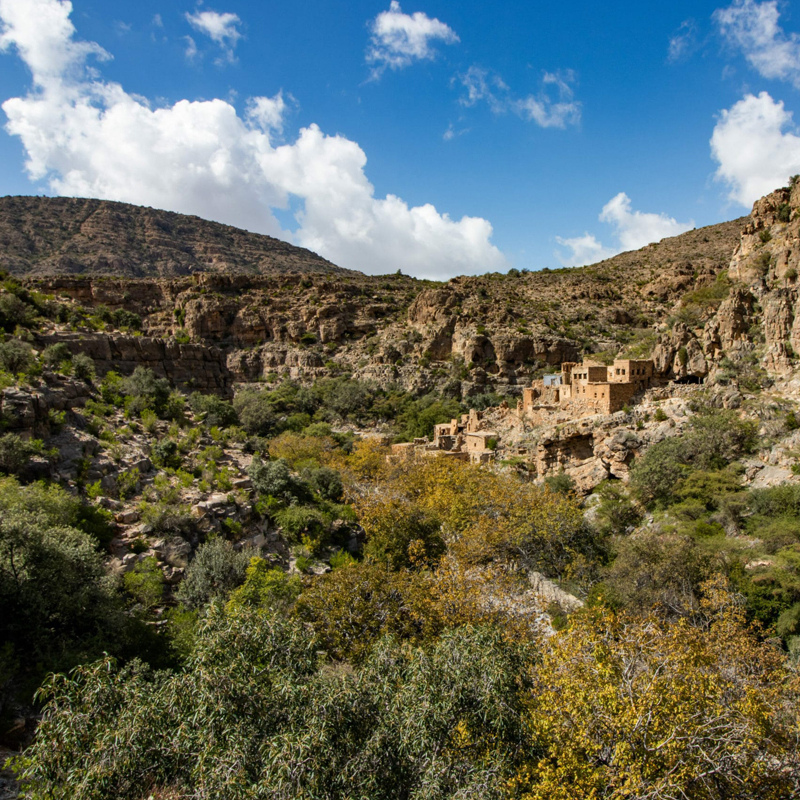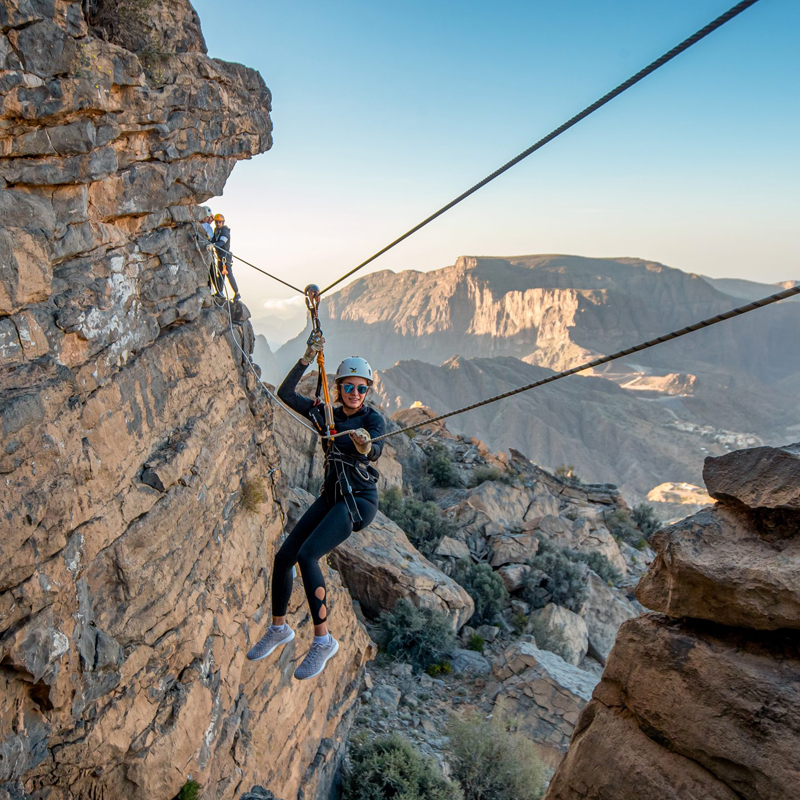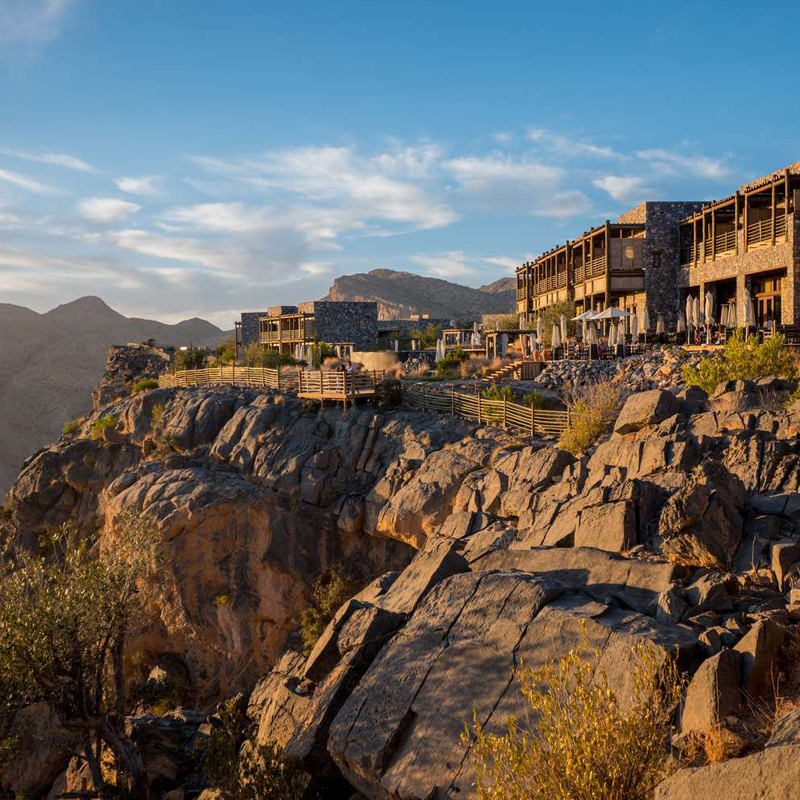Jebel Akhdar - Green Mountain
Description
Jebel Akhdar, known for its traditional rose water extraction and agricultural products including pomegranates, walnuts, apricots, black grapes, and peaches. It is also the site of honey bee breeding for much of Oman. Spring is the best time to visit Jebel Akhdar (Green Mountain) when the terrace plantations are lush and vibrant and the roses are in bloom
Marked by a grand new double-arched gateway, the town forms a natural access point for the historic sites of Bahla and Jabrin, and for excursions up the mountain roads to Jebel Akhdar and Jebel Shams. Nizwa is now the second-biggest tourist destination in Oman. It was named the Capital of Islamic Culture in 2013. The city is known for date cultivation, the most highly prized varieties of which are khalas and khumaizi.
How to get to Jebel Akhdar – Do you need a 4WD?
The road to Jebel Akhdar is fully paved.
However, it is only accessible to well maintained 4WD with a maximum of 6 people inside – at the checkpoint you must have your driver license, car insurance and ID ready.
They won’t let you go up without a 4WD.
Make sure your breaks are in good condition – the road is steep
From the checkpoint, the climb to the plateau is a 45 minute steep drive to the main village – the road is steep but in good conditions
1. Nature Walks
You can enjoy short or full-day excursions. With two young children (ages two and six), we opted for the shorter hikes of 2-3 hours.
2. Adventure Treks and Cave Exploration
Where we stayed in Jabal Akdar, the hotel had many different hiking options on marked trails. There were a few rather difficult hikes that were accessible from the hotel via foot or via four-wheel drive vehicle with a hired hiking guide. Highlights will include incredible views of gorges and valleys, seeing some of the oldest Juniper trees on the Arabian peninsulas, hikes through pomegranate fields, and visiting abandoned villages as well as witnessing life in local communities.
3. Wadi Bani Habib
The petite mountain village of Wadi bani Habib is located in the Jebel Akhdar mountain region in northern Oman. It is built entirely of mud and once had about 700 inhabitants. The terrain is too steep for road construction, the way to Birkat al Mawz or Nizwa was managed by donkeys and there was no electricity either.



